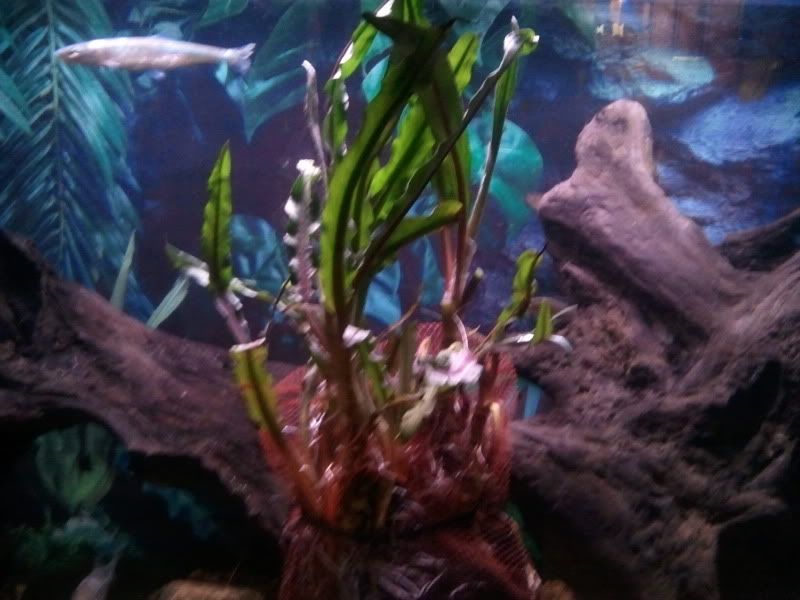Nitrates too high!
#1
 Guest_Jdan_*
Guest_Jdan_*
Posted 21 March 2012 - 08:16 PM
#2
 Guest_EricaWieser_*
Guest_EricaWieser_*
Posted 21 March 2012 - 08:55 PM
Duckweed and I don't get along. I have tried to remove it (sort of on a dare at first, after hearing that it was difficult to remove) multiple times now with no success. It's still in both my tanks. And I didn't intentionally put it in either tank. So no, I do not recommend you use duckweed.I am thinking a duck weed colony when it shows up in the river at some reliable spots in a few weeks?
Ceratophyllum demersum and Myriophyllum pinnatum are native species that have fast, healthy growth as floating plants. Ceratophyllum grows quicker than Myriophyllum pinnatum, but I don't have any at the moment. If you want a starter sample of M. pinnatum, just send me the cost of shipping and I'll mail you a handful.
A refugium is a viable solution. Marine aquarists have some great example refugium setups and how-to guides.I had planned siphon system to send tank water to the garden and a new water line directly to tank. Maybe a planted tank above tank with a feed valve. Then siphon to lower 46b. Then siphon to garden. Any ideas?
Here are two example setups showing water flowing from the main tank into a planted side tank: http://www.reeflove....71225060318.JPG and http://jjgeisler.com...p-refugium2.htm
The growing plants are the only really important part. More information on why: http://theaquariumwi...ical_Filtration Diana Walstad wrote the book on planted tanks, literally.
Edited by EricaWieser, 21 March 2012 - 09:15 PM.
#3
 Guest_Jdan_*
Guest_Jdan_*
Posted 21 March 2012 - 10:01 PM
#4
 Guest_Jdan_*
Guest_Jdan_*
Posted 22 March 2012 - 12:02 AM

#5
 Guest_steve_*
Guest_steve_*
Posted 22 March 2012 - 12:15 AM
It's unfortunately common for even municipal water sources to have some level of nitrates. I know of some municipal water systems here in southern Ohio that have wells that they cannot even use due to high nitrates from farm runoff. I have a friend that works for a municipal water system who told me that the test kits we use normally read higher than the more expensive ones that they use, so it might not be quite as bad as it appears. I think we have a few people here on the forum that do that too and could tell you more than I can about that though.
If I'm not mistaken, I think 10ppm nitrate might be what is considered the safe limit for people.
Might be interesting to check the nitrate level of the river water as well.
#6
 Guest_EricaWieser_*
Guest_EricaWieser_*
Posted 22 March 2012 - 06:34 AM
Remember plants use the majority of their nitrate when they're growing. This plant might take a week to get out of the shock of being transplanted and start growing again. I don't know what species it is, so I can't say whether or not it's one of the fast growing ones. If after a month it hasn't doubled in size, a faster growing plant might help you more.I ...will check no3 later.
Edited by EricaWieser, 22 March 2012 - 06:35 AM.
#7
 Guest_EricaWieser_*
Guest_EricaWieser_*
Posted 22 March 2012 - 09:47 PM
Edited by EricaWieser, 22 March 2012 - 09:48 PM.
1 user(s) are reading this topic
0 members, 1 guests, 0 anonymous users







